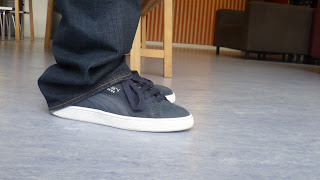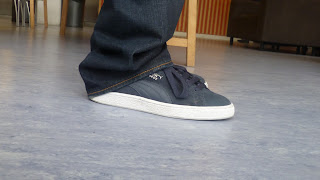ECU (Extreme Close Up) / Big Close Up
- This shot shows off the facial expressions by the use of the ECU
- The purpose of this shot is to convey emotions through the eyes and the actor/actress facial expressions effectively.
- Out of all the shots we took this represents ECU the best.
Bad Shot: ECU
- The first shot is blurred showing an unclear image
- The second shot doesn't use the idea of the "rule of third" and is uneven.
Wide Shot
- These shots show of the landscape/background as well as the character
- Unlike te ECU this shot shows off physical movement instead of expressions
- Space in the shot has been left for movement
- Creates the scene setting
Bad Shot: Wide Shot
- Doesn't uses the "rule of third" leaving to much head shape
- The shot doesn't show the character clearly and cuts off the body.
- Background lighting is bad
Feet Shot: Interesting?
- This is an interesting side shot of feet; getting ready to create the movement
- Can be used for product placement
- Could have been more interesting if we had used a close-up
Rules of Third
- Side shot - sets scene - centres the actor/actress - clearly shows what going on/where the attention of the shot is
Bad Shot: Rule of Third
- unclear/can't see the character/scene of the shot
- No understanding of what is happening within the shot
- Bad lighting, which is creating bad shadowing in the scene
- Too much head space in the shot
Over Shoulder Shot
- Shot shows conversation clearly
- Clear view from over the shoulder
- Creates perspective to the audience
- Clear lighting
Bad Shot: Over Shoulder Shot
- Unclear view of conversation
- Lots of head shape
- The character not shown clearly in the shot/ cut out
Lighting
- Shows strong detail due to the lighting from the windows reflection
Bad Shot: Lighting
- Cut out of shot
- Blurred to over exposed light




































